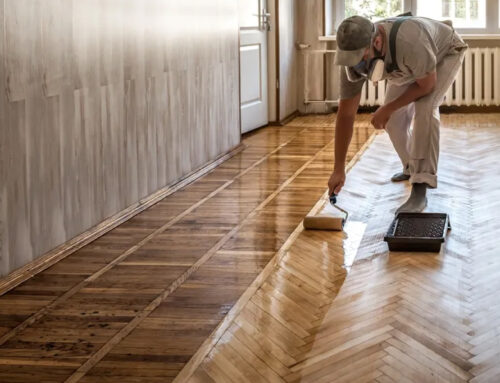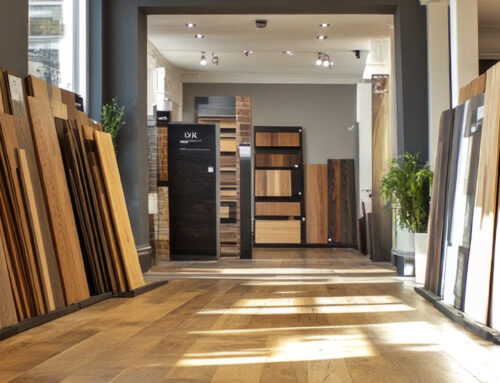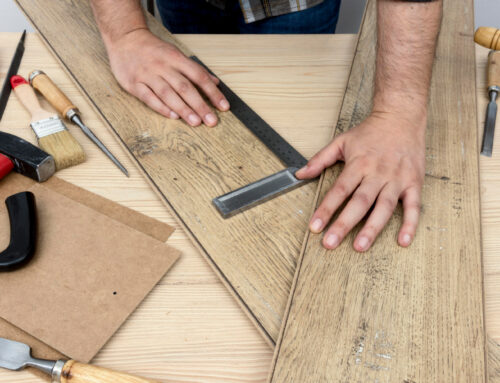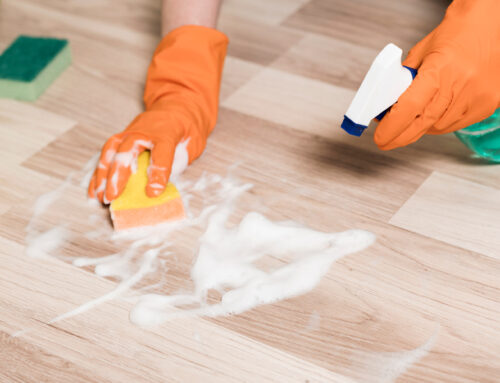Engineered hardwood options combine real wood beauty with enhanced stability and moisture resistance, making them ideal for contemporary living spaces. Top brands offer diverse price ranges from $4-$18 per square foot. Key selection factors include veneer thickness, plank width, finish type, and heating system compatibility. Installation methods include click-lock floating, glue-down, and nail-down systems, with floating installation being most DIY-friendly for modern homes.
Beautiful hardwood floors create the foundation for stunning modern interiors, but traditional solid wood comes with limitations that don’t match today’s lifestyle demands. Engineered hardwood solves these challenges by combining authentic wood appearance with advanced construction technology. These floors handle moisture better, install over various subfloors, and work with radiant heating systems that solid wood cannot accommodate. The result is engineered hardwood flooring options that deliver timeless elegance without compromising on performance, making them the smart choice for contemporary homes that need both style and practicality.
Talk to a flooring expert to find engineered hardwood that fits your style, budget, and installation needs. Rustic Wood Floor Supply helps homeowners choose the perfect wood species and finish from a wide selection.
Schedule Free Consultation: (678) 691-0533
What Is Engineered Hardwood Flooring?
Engineered hardwood flooring features a real hardwood veneer bonded to multiple layers of plywood or high-density fiberboard. This multi-layer construction creates a more stable product than solid hardwood while maintaining an authentic wood appearance and feel. The design allows these floors to perform better in varying humidity conditions than traditional solid wood options.
The construction typically includes three main components:
- Top veneer layer: Real hardwood that provides the visual appearance
- Core layers: Plywood or HDF that adds dimensional stability
- Backing layer: Moisture barrier that prevents warping and cupping
This design lets floors expand and contract evenly, preventing the gaps and movement issues common with solid wood.
Advantages Over Solid Hardwood
Engineered hardwood offers superior stability and installation flexibility compared to solid wood flooring. “The layered cross-grain construction improves moisture resistance, making it suitable for areas where solid hardwood might fail. These advantages make engineered floors the preferred choice for modern homes with radiant heating, concrete subfloors, or varying humidity levels.
1. Enhanced Durability and Moisture Resistance
Engineered hardwood resists moisture-related problems better than solid wood because its cross-grain construction counteracts natural wood movement. The multi-layer design prevents cupping, crowning, and excessive expansion that can damage solid hardwood floors. Modern engineered floors handle humidity changes more effectively, making them suitable for kitchens, basements, and homes with radiant heating systems.
2. Installation Flexibility
Engineered hardwood options offer three installation methods: floating, glue-down, and nail-down systems. Floating installation requires no adhesives or nails, making it ideal for DIY projects and installations over concrete subfloors.
Installation methods comparison:
- Floating: Quick installation, easily removable, works over radiant heat
- Glue-down: Permanent installation, excellent stability, minimal noise
- Nail-down: Traditional method, requires a wood subfloor, professional installation recommended
3. Sustainability and Eco-Friendly Aspects
Engineered floors use less hardwood per plank than solid wood flooring. The core layers utilize fast-growing softwoods or recycled materials, making engineered hardwood a more sustainable choice for environmentally conscious homeowners. Many manufacturers source wood from certified forests and use low-VOC finishes that improve indoor air quality compared to traditional hardwood flooring options.
Key Selection Criteria for Modern Homes
Choosing the right engineered hardwood involves evaluating wood species, construction quality, and finish options that match your lifestyle needs. Modern homes require flooring that performs well with contemporary heating systems, open floor plans, and busy family schedules. Understanding these key factors ensures you select engineered hardwood options that deliver both beauty and long-term performance.
Wood Species Options
- Oak remains the most popular choice for its durability and classic grain patterns. In 2022, red oak emerged as the largest wood type segment, accounting for 35.2% revenue share of the North American wood flooring market. Red oak offers warm tones while white oak provides cooler, more contemporary aesthetics with excellent stain acceptance.
- Hickory delivers exceptional hardness and distinctive grain variation, perfect for rustic or farmhouse-style interiors. Its natural color variation adds character to modern spaces.
- Maple provides smooth, consistent grain with light natural coloring that accepts stains beautifully. Hard maple works well in high-traffic areas and modern minimalist designs.
- Birch offers affordability with attractive grain patterns similar to maple. Its light color and fine texture complement Scandinavian and contemporary design themes.
- Bamboo (technically a grass) offers eco-friendly flooring with a sleek grain pattern and natural antimicrobial benefits.
Veneer Thickness and Wear Layer
Veneer thickness determines refinishing potential and long-term durability. Thicker wear layers allow multiple refinishing cycles, extending the floor’s lifespan significantly.
- 2mm wear layer: Budget option, limited refinishing potential
- 3-4mm wear layer: Standard residential use, 1-2 refinishings possible
- 6mm+ wear layer: Premium option, multiple refinishings, longest lifespan
Thicker veneers provide better durability in high-traffic areas and maintain their appearance longer between maintenance cycles.
Plank Widths and Finishes
Wide planks (5+ inches) create spacious, contemporary looks with fewer seams and enhanced wood grain visibility. Extra-wide planks (7+ inches) make rooms appear larger and showcase natural wood character.
“Popular modern finish options include:
- Matte finishes: Low sheen, hides scratches, contemporary appearance
- Semi-gloss: Moderate sheen, easier cleaning, traditional look
- Brushed textures: Enhanced grain definition, slip resistance
- Natural oil: Penetrating finish, easy touch-ups, authentic feel
Compatibility with Underfloor Heating
Many engineered hardwood floors work with radiant heating systems when properly installed. Check manufacturer specifications for maximum temperature limits and thermal conductivity ratings.
Floating installations typically work best with radiant heat because they allow natural expansion and contraction without affecting the heating system’s performance.
Popular Engineered Hardwood Styles and Trends
Contemporary design trends favor wide planks, natural finishes, and unique textures that showcase wood’s authentic character. Modern homeowners increasingly choose floors that create seamless, sophisticated appearances while providing practical benefits like easy maintenance and enhanced durability. These styles reflect the trend of using natural materials to make homes feel warmer and more inviting.
Wide Plank and Extra-Long Boards
Engineered hardwood flooring options increasingly feature wider planks and longer lengths that create seamless, sophisticated appearances. Planks seven inches or wider create a seamless look and show off the natural grain. Extra-long boards (up to 84 inches) reduce the number of end joints, creating clean lines that complement modern open-floor plans and contemporary architecture.
Unique Finishes and Treatments
- UV-lacquered finishes provide exceptional durability with faster curing times and enhanced scratch resistance. These factory-applied finishes offer consistent quality and immediate occupancy after installation.
- Smoked treatments use heat to create deep, dramatic colors that go through the veneer, not just the surface. This process produces unique color variations impossible to achieve with surface stains.
- Whitewashed and lime-washed finishes lighten wood tones while preserving natural grain patterns. These treatments create bright, airy appearances perfect for modern minimalist and coastal design themes.
- Natural oil finishes penetrate wood fibers rather than forming surface films. They provide an authentic wood feel, easy maintenance, and the ability to spot-repair damaged areas without refinishing entire rooms.
Trending Colors and Textures
Modern homes favor gray-toned woods that complement contemporary color palettes. Wire-brushed textures enhance grain definition while providing subtle slip resistance and visual interest.
European oak with natural oil finishes dominates luxury installations, offering sophisticated grain patterns and excellent durability for high-end modern homes.
Thermal modification creates rich brown tones throughout the wood veneer without chemical stains. This process enhances dimensional stability while producing unique color variations that age gracefully.
Installation Methods
Correct installation is key to your floor’s performance and keeping your warranty valid. Each installation method offers specific advantages depending on subfloor conditions, room usage, and homeowner preferences. Understanding these options helps you choose the most appropriate approach for your engineered hardwood options and ensures optimal results that last for decades.
Click-Lock Floating Floors
Click-lock systems connect planks without adhesives or nails, creating floating floors that rest on top of underlayment. This method works well over concrete subfloors and radiant heating systems.
- Benefits: Quick installation, easily removable, no subfloor damage, suitable for DIY projects
- Considerations: Requires expansion gaps, may produce more noise, not suitable for all environments
Glue-Down Installation
Glue-down installation bonds planks directly to the subfloor using wood flooring adhesive. This method provides excellent stability and minimal noise transmission between floors.
- Benefits: Permanent installation, superior stability, reduced noise, works with thin veneers
- Considerations: Requires proper subfloor preparation, professional installation recommended, and difficult removal
Nail-Down Methods
Traditional nail-down installation secures planks through the tongue into wood subfloors. This method works best with thicker engineered planks and provides long-term stability.
- Benefits: Time-tested method, excellent stability, allows refinishing, traditional installation
- Considerations: Requires a wood subfloor, professional installation is necessary, and creates a permanent installation
Maintenance Tips for Long-Lasting Floors
Proper maintenance preserves the beauty and extends the lifespan of engineered hardwood floors significantly. Regular care prevents damage, protects your warranty, and keeps floors looking great for decades. Simple daily habits and periodic professional maintenance keep engineered hardwood options performing at their best while protecting against common problems like scratches, water damage, and finish wear.
Cleaning Guidelines and Safe Products
Use pH-neutral cleaners specifically designed for hardwood floors. Avoid water-based cleaners, vinegar, or steam mops that can damage finishes and penetrate seams between planks.
- Daily maintenance: Sweep or vacuum with soft brush attachments
- Weekly cleaning: Damp mop with manufacturer-approved cleaners
- Monthly care: Apply wood floor polish following the manufacturer’s instructions
Scratch Prevention Strategies
Place felt pads under furniture legs and use area rugs in high-traffic zones. Door mats at entrances trap dirt and moisture before they reach the flooring surfaces.
Protection methods:
- Felt furniture pads prevent scratches from moving furniture
- Area rugs protect high-traffic pathways and seating areas
- Door mats trap dirt and moisture at entry points
- Pet nail trimming reduces the scratch potential from animals
Warranty and Refinishing Considerations
Most engineered hardwood options include structural warranties of 25+ years and finish warranties of 10-15 years. Refinishing potential depends on veneer thickness, with premium products allowing 2-3 refinishings over their lifetime. Keep installation receipts and follow manufacturer maintenance guidelines to preserve warranty coverage. Professional refinishing every 10-15 years maintains appearance and extends floor life significantly.
Cost & Timing Considerations
Understanding pricing factors and optimal purchasing times helps maximize your flooring budget while securing premium quality products. In 2023, hardwood flooring sales in the United States amounted to over four billion U.S. dollars, demonstrating the substantial market for quality wood flooring products. Planning your purchase can save money and help you get the best quality for your budget.
Price Factors and Seasonal Sales
Engineered hardwood options’ prices fluctuate based on wood species, veneer thickness, finish quality, and brand reputation. End-of-year sales often provide savings on premium products.
Cost factors that affect pricing:
- Wood species rarity and hardness ratings
- Veneer thickness and wear layer quality
- Finish type and application method
- Brand reputation and warranty coverage
- Installation complexity and subfloor requirements
Cost-Effective Buying Strategies
Purchase during manufacturer promotions or end-of-season sales for significant savings. Order 10% extra material for future repairs and ensure consistent lot numbers for color matching.
Money-saving tips:
- Buy during promotional periods for the best pricing
- Order extra material for future repairs and transitions
- Compare installation costs between DIY and professional methods
- Consider long-term value versus initial cost investment
Conclusion
Engineered hardwood flooring options provide the perfect balance of authentic wood beauty, modern performance, and installation flexibility that today’s homeowners demand. The key lies in selecting the right combination of wood species, veneer thickness, finish type, and installation method that matches your home’s specific needs and lifestyle requirements.
Upgrade your home with engineered hardwood chosen to match your style and budget. Rustic Wood Floor Supply combines years of flooring expertise with an extensive selection of engineered hardwood options from top manufacturers. We understand that choosing the right flooring involves balancing beauty, performance, and budget considerations.
Start Your Project Today: (678) 691-0533
Frequently Asked Questions
What is engineered hardwood flooring?
Engineered hardwood flooring consists of a top layer of real hardwood over several layers of plywood or fiberboard, offering greater stability and moisture resistance than solid hardwood.
How long does engineered hardwood flooring last?
With proper care and maintenance, engineered hardwood flooring can last 20 to 30 years, and premium brands may last even longer.
Can engineered hardwood flooring be refinished?
Engineered hardwood can be refinished if the top wear layer is thick enough, but most products allow for only one or two refinishings during their lifespan.
Is engineered hardwood suitable for kitchens and basements?
Yes, it is more moisture-resistant than solid wood and is suitable for kitchens and basements, but it is not completely waterproof and should be protected from excessive moisture.
How does engineered hardwood compare in cost to solid hardwood?
Engineered hardwood is usually more budget-friendly than solid hardwood while still providing the same look and durability for most residential uses.
What installation methods are best for engineered hardwood floors?
It can be installed via floating, glue-down, or nail-down methods; floating installation is typically faster and can be DIY-friendly.
Author Profile
- I have worked in hardwood flooring for the last 8 years. Use to run a company of residential crews as well as a company with gym flooring. If you need floor installation or refinishing help, I should have an answer or at least get you in the right direction.
Latest entries
 FlooringDecember 10, 2025Wood Floor Restoration in Atlanta: What Affects the Cost
FlooringDecember 10, 2025Wood Floor Restoration in Atlanta: What Affects the Cost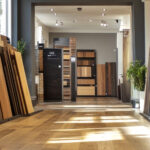 FlooringDecember 8, 2025Top 6 Wholesale Hardwood Flooring Solutions for Your Home & Office – Boise, ID
FlooringDecember 8, 2025Top 6 Wholesale Hardwood Flooring Solutions for Your Home & Office – Boise, ID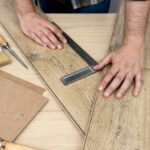 FlooringNovember 25, 2025What Engineered Hardwood Flooring Will Last Longest?
FlooringNovember 25, 2025What Engineered Hardwood Flooring Will Last Longest? FlooringNovember 22, 2025Best Wood Floor Cleaner Liquid for Hardwood Flooring
FlooringNovember 22, 2025Best Wood Floor Cleaner Liquid for Hardwood Flooring

